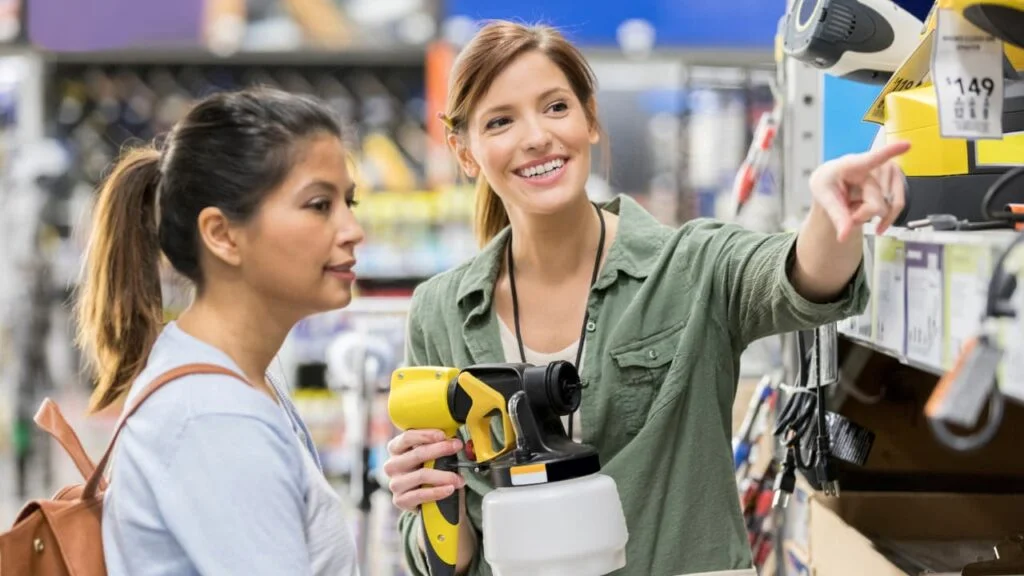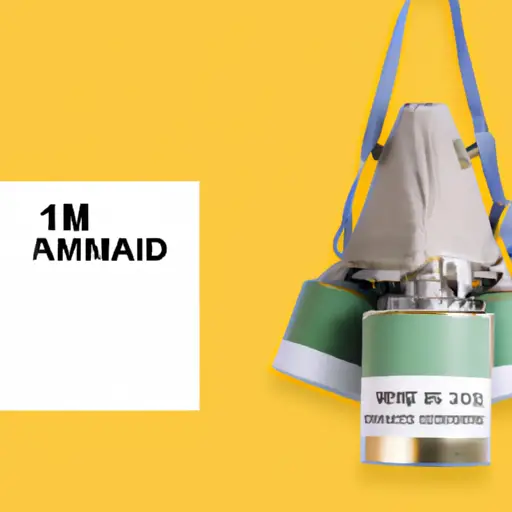If you’ve ever wondered whether you need to wear a respirator when using a sprayer, you’re not alone. Many people are unsure about the need for respiratory protection while operating sprayers, and it’s important to have the right information to keep yourself safe. In this article, we’ll explore the reasons why wearing a respirator is crucial when using a sprayer, highlighting the potential risks involved and providing you with practical tips to ensure your well-being. So, grab a comfortable seat and let’s get started on this informative journey!
Do I Need To Wear A Respirator When Using A Sprayer?
Table of Contents
Sprayer Safety
Understanding the Risks of Sprayer Usage
When it comes to using a sprayer, it’s important to be aware of the potential risks involved. While sprayers can be incredibly useful tools for a variety of applications, they also come with certain hazards that need to be taken into consideration. Understanding these risks is the first step in ensuring your safety while using a sprayer.
Potential Hazards of Using a Sprayer
Using a sprayer can expose you to various hazards, particularly when it comes to the chemicals used and the airborne particles that are generated during spraying. The chemicals used in sprayers can be toxic, flammable, or corrosive, posing a risk to your health if inhaled or in contact with your skin. Additionally, the airborne particles generated during spraying can lead to respiratory issues if inhaled. These hazards make it crucial to take necessary precautions to protect yourself while using a sprayer.
Respirator Importance
The Role of Respirators in Protecting Against Harmful Substances
Respirators play a vital role in protecting you against harmful substances that you may encounter while using a sprayer. A respirator acts as a barrier, filtering out airborne particles and reducing your exposure to hazardous chemicals. By wearing a respirator, you can significantly minimize the risk of inhaling harmful substances and safeguard your respiratory system.
Benefits of Wearing a Respirator While Spraying
Wearing a respirator while using a sprayer offers several benefits. Firstly, it helps prevent respiratory issues such as asthma, bronchitis, and other lung diseases caused by inhaling airborne particles or toxic chemicals. Respirators also provide protection to your eyes and face, reducing the chances of chemical splashes or other physical injuries. Furthermore, wearing a respirator can enhance your overall peace of mind and confidence, knowing that you are taking proactive steps to protect your health and well-being.
Sprayer Types and Respirator Requirements
Different Types of Sprayers for Various Applications
There are several types of sprayers available, each designed for specific applications. Some common types include handheld sprayers, backpack sprayers, and motorized sprayers. Handheld sprayers are perfect for small-scale projects, while backpack sprayers are ideal for medium-sized areas. Motorized sprayers are more powerful and suitable for larger areas or commercial use. Understanding the different types of sprayers available will help you choose the right one for your specific needs.
Selecting the Right Respirator for Your Sprayer
The selection of the appropriate respirator depends on the type of sprayer you are using and the specific chemicals or airborne particles you will be exposed to. It is important to choose a respirator that is compatible with the sprayer you are using and offers adequate protection against the identified hazards. It is recommended to consult the manufacturer’s guidelines and safety data sheets of the chemicals you will be using to determine the necessary level of respiratory protection required.
Chemicals and Airborne Particles
Understanding the Chemicals Used in Sprayers
Sprayers are commonly used for applying a wide range of chemicals, including pesticides, herbicides, fertilizers, and cleaning solutions. These chemicals can be highly toxic and pose serious risks if not handled properly. Understanding the properties of the chemicals you are using, such as their toxicity, flammability, and corrosiveness, is essential for implementing appropriate safety measures and choosing the right protective equipment.
Dangers of Inhaling Airborne Particles
During the spraying process, airborne particles are released into the surrounding air. Inhaling these particles can lead to respiratory issues and other health problems. Airborne particles may include dust, droplets from the spray solution, or tiny particles of the chemicals being sprayed. The size and composition of these particles determine their potential harm to your respiratory system. Wearing a respirator helps filter out these particles, minimizing the risk of inhalation and protecting your health.
Respirator Fit and Function
Proper Fitting and Seal of a Respirator
To ensure maximum protection, it is crucial to properly fit and seal your respirator. A respirator that does not fit correctly or has a poor seal may allow hazardous substances to enter your respiratory system. To achieve a proper fit, make sure the respirator covers your nose and mouth entirely and creates a tight seal against your face. Perform a fit test or follow the manufacturer’s instructions to ensure that the respirator fits snugly and provides effective protection.
How Respirators Filter Air Contaminants
Respirators work by filtering the air you breathe, removing contaminants and harmful particles. They typically consist of one or more layers of filter material that trap airborne particles, preventing them from reaching your respiratory system. The efficiency of a respirator in filtering air contaminants depends on its filtration capacity and the type of filters it uses. Different respirators have different filter mechanisms, such as mechanical filtration, chemical absorption, or both, ensuring that the air you breathe is as clean and safe as possible.
Legal and Safety Standards
OSHA Guidelines and Regulations
To ensure workplace safety, the Occupational Safety and Health Administration (OSHA) has established guidelines and regulations regarding the use of respirators. OSHA’s standards outline the responsibilities of both employers and employees in ensuring the proper use of respirators. These standards cover various aspects, including fit testing, medical evaluations, training, and the maintenance of respiratory protection programs. Familiarizing yourself with these guidelines is crucial for complying with legal requirements and ensuring your safety.
Employer Responsibilities in Ensuring Respirator Use
Employers have a significant role in ensuring the safe use of respirators in the workplace. They are responsible for conducting hazard assessments, providing appropriate respiratory protection, and implementing respiratory protection programs. Employers must also offer comprehensive training on respirator usage, maintenance, and emergency procedures. It is essential for employees to be familiar with their employer’s policies and procedures to effectively protect themselves while using sprayers.
Health Risks and Precautions
Potential Health Effects of Sprayer Usage
Using a sprayer without proper safety measures can pose significant health risks. Chronic exposure to toxic chemicals can lead to long-term health effects, including respiratory problems, skin irritations, and even certain cancers. Short-term exposure may cause symptoms such as dizziness, nausea, headaches, or eye irritation. It is vital to be aware of these potential health effects and take necessary precautions to minimize your exposure.
Additional Safety Precautions to Consider
In addition to wearing a respirator, there are other safety precautions you should consider when using a sprayer. Always wear appropriate protective clothing, such as gloves, goggles, and a protective suit, to prevent direct contact with chemicals or accidental splashes. Ensure proper ventilation in the spraying area to reduce the concentration of airborne particles. Regularly clean and maintain your sprayer to prevent chemical build-up and leakage. Following these additional safety precautions will further enhance your safety while using a sprayer.
Personal Protective Equipment (PPE)
Other PPE to Wear Alongside a Respirator
While a respirator provides crucial protection against airborne contaminants, it is advisable to wear additional personal protective equipment (PPE) to ensure comprehensive safety. Depending on the specific hazards involved, you may need to wear gloves, goggles, face shields, or protective suits. These additional pieces of PPE help protect other parts of your body from chemical exposure or physical injury. It is important to consult the safety data sheets of the chemicals being used to determine the appropriate PPE required.
Protecting Other Parts of Your Body
In addition to respiratory protection, it is essential to take measures to protect other parts of your body while using a sprayer. Chemicals can cause skin irritations or burns, so wearing chemical-resistant gloves is crucial. Goggles or face shields protect your eyes from accidental chemical splashes or sprayer spray-back. If working with highly corrosive chemicals, consider wearing protective suits or clothing to prevent direct contact. By protecting your entire body, you can minimize the risk of chemical exposure and potential injuries.
Proper Usage and Maintenance
Correct Procedures for Using a Sprayer with a Respirator
Using a sprayer with a respirator requires following specific procedures to ensure efficacy and safety. Start by reading the manufacturer’s instructions for the sprayer and the respirator to familiarize yourself with the correct usage. Verify that the sprayer and respirator are compatible and properly fitted before proceeding. Ensure that you are in a well-ventilated area and that there are no ignition sources nearby if working with flammable chemicals. Always follow the recommended mixing ratios, application methods, and spraying techniques outlined in the product’s instructions.
Maintenance and Replacement of Respirator Components
Regular maintenance of your respirator is crucial to ensure its effectiveness and longevity. Clean the respirator after each use, following the manufacturer’s guidelines. Replace any worn-out or damaged parts, such as filters, valves, or straps, according to the manufacturer’s recommended schedule. Inspect the respirator regularly for signs of wear or deterioration. Proper maintenance and timely replacement of respirator components are essential for ensuring optimal performance and protecting your health while using a sprayer.
Training and Education
Importance of Training for Safe Sprayer Usage
Proper training is pivotal for safe sprayer usage. Training provides essential knowledge and skills to understand the risks involved, select the right personal protective equipment, and use the sprayer and respirator correctly. Training programs cover topics such as hazard recognition, proper handling and storage of chemicals, sprayer maintenance, and emergency procedures. Attending training sessions or workshops specific to sprayer safety equips you with valuable information and empowers you to work safely and confidently.
Resources for Learning About Respirator Use and Sprayer Safety
Numerous resources are available to learn more about respirator use and sprayer safety. OSHA provides comprehensive guidelines and educational materials on respiratory protection in the workplace, including sprayer applications. There are also online courses and training modules offered by reputable organizations and professional associations that focus specifically on sprayer safety. Additionally, manufacturers of sprayers and respirators often provide educational materials and resources to promote safe and responsible usage. Taking advantage of these resources will enhance your knowledge and ensure that you are well-equipped to use a sprayer safely.
In conclusion, wearing a respirator is an essential safety measure when using a sprayer. Understanding the risks associated with sprayer usage, selecting the right respirator, and following proper procedures are crucial for protecting your health. By prioritizing sprayer safety, wearing the recommended personal protective equipment, and staying informed through training and educational resources, you can ensure a safe and productive experience while using a sprayer. Remember, your health and well-being should always be a top priority when working with sprayers.

Upgrade Your Painting Game
Explore our Introduction To The Best Paint Sprayers guide to take your projects to the next level!

